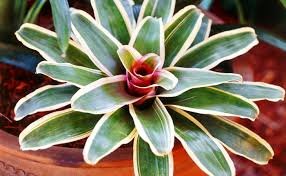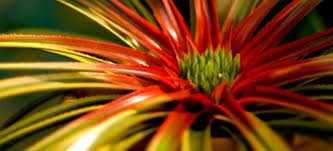I am here with somre information about bromeliads.
Bromeliads

Bromeliads are a family of tropical plants.They are nearly all from Latin America and the Caribbean islands, except for Spanish moss from the southern United States, and a single kind from Africa.
Different sorts of bromeliads

Bromelia, the plant which gives its name to the family, is the main other bromeliad with consumable natural product. Its berries taste somewhat like pineapple, yet are less delicious, and there are not a lot of on each plant.

Fascicularia is the main bromeliad that can be developed in chilly regions. It isn't slaughtered by ice in the event that it is kept dry in the winter.
Pitcairnia is the main wild bromeliad outside the Americas. One animal categories, Pitcairnia feliciana, was discoved living in West Africa. It is presumably dropped from seeds conveyed by moving winged animals.
Puya is the biggest bromeliad. It can grow up to nine meters tall. It lives in the Andes mountains, and is now and again eaten by bears for its nectar. In Chile the youthful leaves of some puyas are eaten in plates of mixed greens.

How to Remove & Pot Up Bromeliad Pups
Bromeliads are easy to propagate because they produce pups (babies) before they die.
he bromeliad pups are very easy to remove. You need to let them grow to a fairly good size, at least 6″ tall, so that the roots have started to form. The bigger the pups, the more root there will be. In the video, I grab them firmly at the base and pull it away from the mother while keeping a good grip on her too. You can also use a clean, sharp knife to cut the pup away.
How To Care For A Bromeliad Plant
Bromeliad plant mind is simple and requires no uncommon instruments or manures. Sustain the plants with a half quality compost each month in the developing season. Water needs are effortlessly accomplished by filling the glass at the base of the takes off. The water that gathers in the pot ought to be purged out week by week to evacuate garbage and the dead creepy crawlies the stale water tends to draw into the container. Set the pot in a saucer of rock filled in part with water to expand mugginess and help give a damp climate. Ensure the roots are not submerged in the water or this may welcome decay. Some bromeliads develop well as "air plants," which are stuck or settled onto logs, greenery or other non-soil natural things. You may have seen Tillandsia plants wired onto coconut shells with no dirt. These plants gather all the sustenance and dampness they require with their leaves yet require a little assistance from you in the indoor setting.
Magoo-2 found a series of multi accounts of a same owner is following your articles to cheat your generous rewards.
Magoo-2 found these accounts are suspicious & can be multi accounts of a single owner. Conclusion is based on last 30 days transactions:
@abdt @wolf-kinght @sardar-sani @tuseef-akram
magoo-2
Check our latest multi comment spam update report